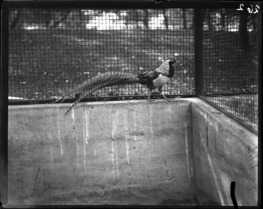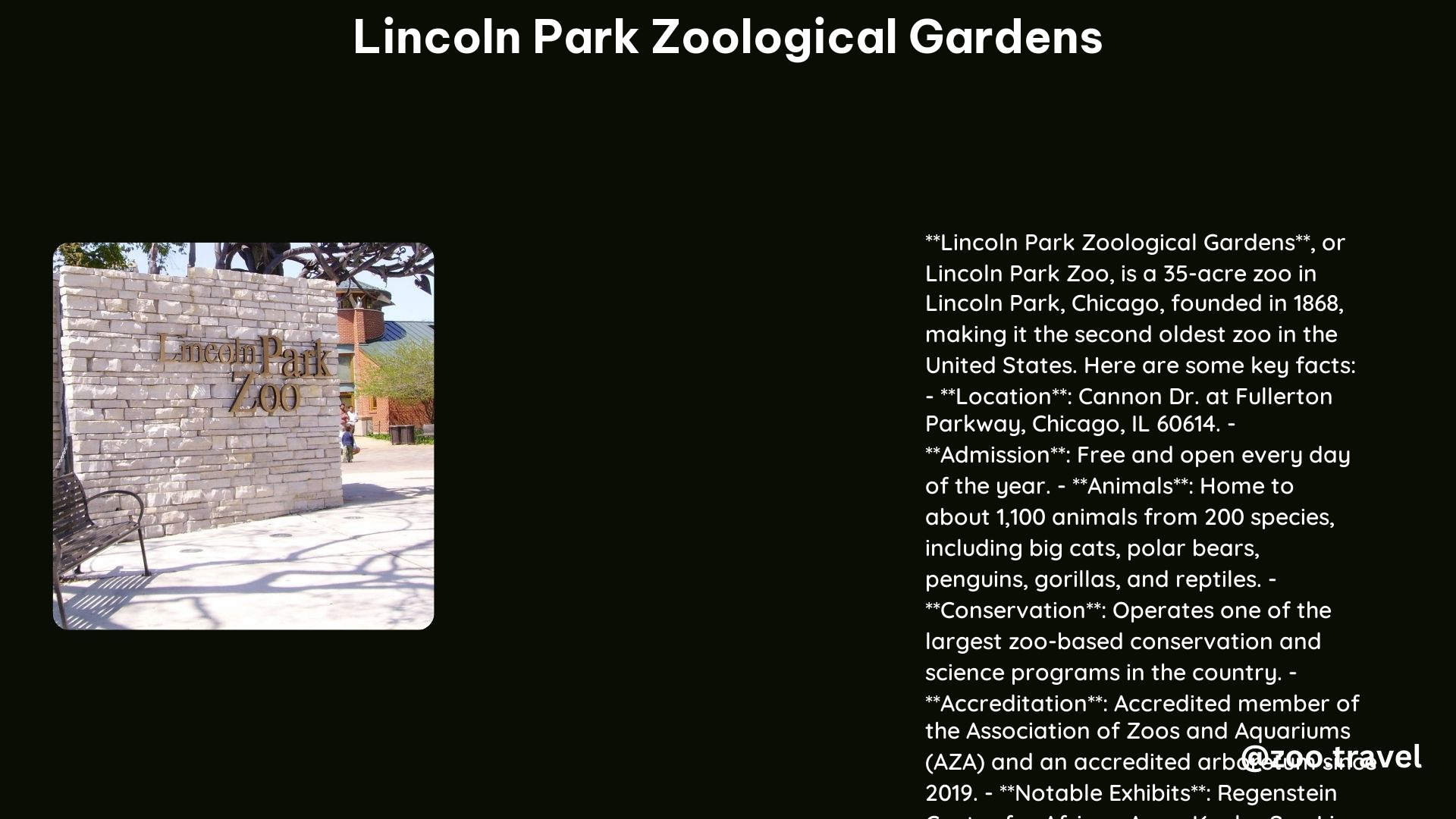Lincoln Park Zoological Gardens, spanning 35 acres in Chicago, is a free-admission zoo home to approximately 1,100 animals representing nearly 200 species. This urban oasis combines diverse animal exhibits, conservation efforts, and educational programs to create a unique wildlife experience. From African savannas to penguin habitats, the zoo offers visitors a chance to explore global ecosystems while supporting crucial research and conservation initiatives.
What Makes Lincoln Park Zoo Unique?

Lincoln Park Zoo stands out for several reasons:
- Free admission
- Urban location
- Diverse animal collection
- Strong conservation focus
- Educational programs
The zoo’s commitment to wildlife preservation, research, and public education makes it a valuable resource for both visitors and the scientific community.
What Are the Must-See Exhibits at Lincoln Park Zoo?

Lincoln Park Zoo offers a variety of exhibits that showcase animals from around the world. Here are some of the most popular attractions:
- Regenstein African Journey: This 60,000-square-foot exhibit simulates four distinct African habitats:
- Rainforest
- African rivers
- African savanna
- African kopje habitats
Visitors can observe animals such as monkeys, West African dwarf crocodiles, pygmy hippos, and giraffes in environments that mimic their natural habitats.
- Robert and Mayari Pritzker Penguin Cove: Opened in 2016, this outdoor exhibit is designed for African penguins. It features:
- A behind-the-scenes breeding area
- Climate-controlled environment for Chicago’s varied weather
-
Viewing areas for visitors to observe penguin behavior
-
Regenstein Center for African Apes: Dedicated to chimpanzees and western lowland gorillas, this center offers:
- 29,000 square feet of indoor and outdoor living space
- Kovler Gorilla Bamboo Forest
- Strangler Fig Forest
- Dry Riverbed Valley
-
Natural habitat features like skylights, waterfalls, and termite mounds
-
Nature Boardwalk: This prairie-style garden serves as a living laboratory and features:
- Native plants
- Diverse wildlife including dragonflies, coyotes, birds, frogs, fish, and turtles
- Research opportunities for the Urban Wildlife Institute
- Educational programs and community engagement activities
How Does Lincoln Park Zoo Contribute to Conservation?
Lincoln Park Zoo is actively involved in several conservation programs:
- Urban Wildlife Institute (UWI):
- Focuses on urban development and natural ecosystem interactions
- Conducts biodiversity monitoring
- Studies disease transmission
- Develops standards for managing urban wildlife
-
Established the Urban Wildlife Information Network (UWIN)
-
Davee Program in Urban Disease Ecology:
- Part of the UWI
- Studies zoonotic disease transmission (e.g., West Nile virus, rabies, avian influenza)
-
Helps mitigate human-wildlife conflicts
-
Community Partnerships:
- Collaborates with local nature and conservation organizations
- Conducts pilot studies on ecosystem health
- Develops conflict-management models for global application
What Botanical Features Does the Zoo Offer?
The zoo’s botanical garden is an integral part of its ecosystem:
- Home to over 850 plant species
- Features hydrangeas and 100-year-old oak trees
- Creates an urban oasis supporting native wildlife
- Nature Boardwalk designed as a prairie-style garden
- Serves as a living laboratory and educational space
How Does the Zoo Engage Visitors in Wildlife Experiences?
Lincoln Park Zoo offers several interactive and educational experiences:
- Chicago Wildlife Watch:
- Allows public participation in animal identification
-
Helps scientists design wildlife-compatible cities
-
Nature Boardwalk Interpretive Walks:
- Guided tours educating visitors about prairie ecosystems
-
Interpretive signage highlighting ongoing research
-
Interactive Exhibits:
- Nose-to-nose access with apes in the Regenstein Center
- Educational signage throughout exhibits
What Educational Programs Does the Zoo Offer?
Lincoln Park Zoo provides a range of educational initiatives:
- Research Internships:
- Offered by the Urban Wildlife Institute
- Provides experience in scientific research
-
Involves participation in long-term monitoring programs
-
Programs for All Ages:
- Tour groups
- Independent research projects
-
Interpretive walks
-
Community Engagement:
- “Live Wildlife Friendly” program
- Social media updates on conservation efforts
What Are the Key Facts About Lincoln Park Zoo?
| Feature | Description |
|---|---|
| Location | Chicago, Illinois |
| Size | 35 acres |
| Number of Animals | Approximately 1,100 |
| Number of Species | Nearly 200 |
| Admission | Free |
| Notable Exhibits | Regenstein African Journey, Penguin Cove, African Apes Center |
| Conservation Focus | Urban Wildlife, Disease Ecology, Community Partnerships |
| Botanical Features | Over 850 plant species, Nature Boardwalk |
Lincoln Park Zoological Gardens offers a unique blend of wildlife conservation, education, and visitor engagement. Its urban setting and free admission make it an accessible and valuable resource for both the local community and visitors from around the world. Through its diverse exhibits, research initiatives, and educational programs, the zoo continues to play a crucial role in wildlife conservation and public education.
References:
– https://www.lpzoo.org/conservation-science/science-centers/urban-wildlife-institute/
– https://www.lpzoo.org/conservation-science/take-action-with-us/live-wildlife-friendly/
– https://www.lpzoo.org/exhibits/nature-boardwalk/
